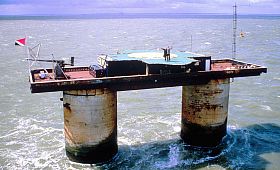
Created by Native Americans at least 1,000 years ago, Ohio’s Serpent Mound is a double mystery.
First, while there are several burial mounds nearby, the serpent itself doesn’t contain any human remains. It’s just a giant earthen snake, 1,330 feet long.
Second, the site on which it’s built shows faulted and folded bedrock, meaning that a huge cataclysm, a meteorite or a volcanic explosion, happened here in the ancient past.
Is that why the serpent was built there? We may never know.






